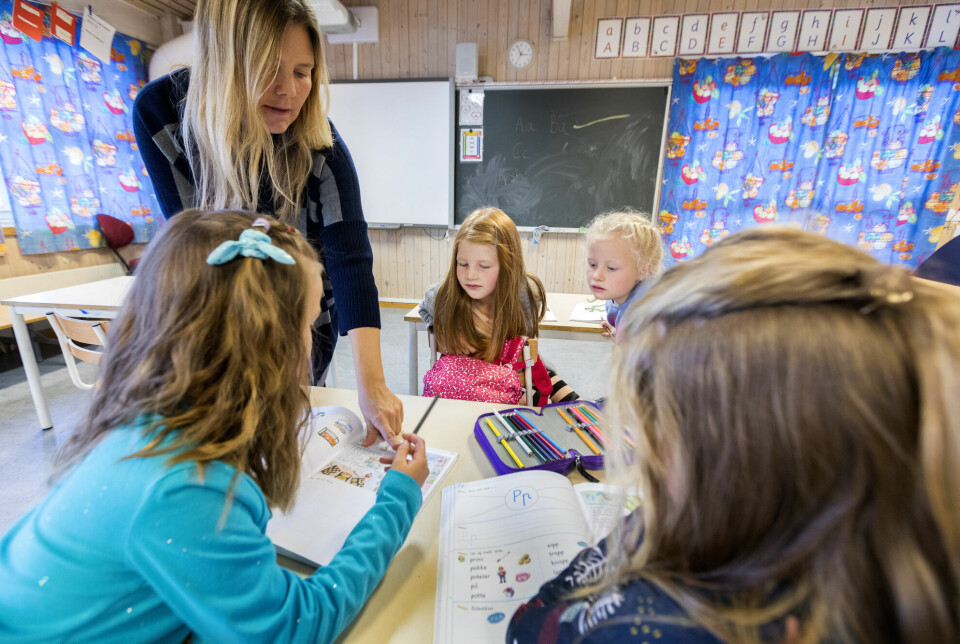THIS CONTENT IS BROUGHT TO YOU BY the University of Stavanger - read more

Could scented books encourage more kids to read?
Do you remember the scented erasers you had as a child? ‘Scratch and sniff objects’ have now made a comeback.
In book form, they can increase children's interest in reading, according to researchers.
Many people born in the 80s probably have fond memories of magazines with perfume sample flaps or stickers and erasers that had the sweet smell of strawberries or candy.
‘Scratch and sniff objects’ have now re-emerged, and this can be positive for children's reading, according to new research.
The return of scented objects
A team of researchers led by the University of Stavanger recently published a new article on scratch-and-sniff books and their history. They found that these books can be an important addition to traditional children's books.
This type of reading can ignite a newfound interest in books among children who may be less motivated to read.
“We believe we'll see a strong resurgence of scratch-and-sniff objects and books. It's a trend that has gained a lot of traction with people looking for an alternative to digital innovations,” says Professor Natalia Kucirkova.
The interest in ‘scratch and sniff objects’ has increased in various products recently; for example, France recently launched a scratch-and-sniff post stamp that, when scratched, releases a delightful scent of fresh baguettes.
Many scented books about food
Researchers have explored the use of scents in books to enhance the story and engage readers. While traditional books often have a distinctive smell from being printed, the intentional use of scent is less common.
A key question the researchers wanted to answer was why scented books are more prevalent in children's literature.
Of the 245 books the researchers found in their sample that included scratching and sniffing, or so-called ‘scented books’, the majority were aimed at younger readers.
Most of the scents in these books were associated with either food or other edible items, or special holidays like Christmas and Halloween. Many books focused on either pleasant or unpleasant smells.
“The use of odours in books for children and young people can engage them in reading in a multisensory way. With an educational or literary intention, added scratch-and-sniff features can increase engagement with the story,” Kucirkova says.
“However, without this intention, the use of scent can quickly become just a gimmick and distract readers from immersing further in the story.”
Can engage young readers
According to this and a previous review of best-selling children’s scented books, there are many different types of odour-enhanced books for children.
Some are about food and have many food-related smells, while others are about the sea and ocean—or scents associated with travel.
There are also scented books for children like The Hardworking Honey Bee from 2013, which uses essential oils to calm children before bedtime.
“Children's books with the use of smell stimuli can also be seen as an opportunity to engage children in thinking about similarities and differences, for example matching colors, visual shapes, or textures with scents,” Kucirkova says.
She mentions that The Smell of a Rainbow from 2011 is a good example where the scents are associated with the colours of the rainbow.
Kucirkova believes that scratch-and-sniff books constitute a unique book genre that stands out from traditional picture books and that this can be an important addition that makes children and young people more interested in reading.
Many do not take scents seriously
Some critics have pointed out sensory overload with smell-enhanced objects, which can occur when odours are released simultaneously with other sensory stimuli such as sounds or moving images.
But the professor is convinced that such sensory overload can be easily managed by giving control to the user: for example, with the scratch-and-sniff books, it is the reader who decides to scratch and smell the scented surface in the book.
Researchers find it sometimes challenging to convey the importance of smell-enhanced books and how these types of books can be a valuable supplement to traditional books, especially for children.
“Many don't take the sense of smell seriously. But these books can actually evoke emotions in the reader in a way that traditional books cannot,” she says.
Researchers have seen that families who read such books together at home have a lot of fun and have great conversations about the books.
“And it can also lead to children and young people who have previously shown little interest in books to open their eyes to the world of literature,” says Kucirkova.
References:
Kucirkova, N. & Jensen, I.B. Parent–child shared reading of scratch-and-sniff books: the communicative affordance of olfaction, European Early Childhood Education Research Journal, vol. 32, 2024. DOI: 10.1080/1350293X.2023.2254532
Kucirkova, N.I. & Tosun, S. Children's Olfactory Picturebooks: Charting New Trends in Early Childhood Education, Early Childhood Education Journal, 2023. DOI: 10.1007/s10643-023-01457-z
Spence et al. Narrative historical review of scratch-and-sniff books and their key storytelling features, i-Perception, vol. 15, 2024. DOI: 10.1177/20416695241257566

This content is paid for and presented by the University of Stavanger
This content is created by the University of Stavanger's communication staff, who use this platform to communicate science and share results from research with the public. The University of Stavanger is one of more than 80 owners of ScienceNorway.no. Read more here.
More content from the University of Stavanger:
-
How the Vikings protected themselves from attacks
-
Like tuning forks in space: A final pure tone reveals the mysterious interior of neutron stars
-
Artificial intelligence could improve the quality of life for more patients following a stroke
-
Cathedral's lost treasures uncovered
-
Norwegian researchers can contribute to changing the Big Bang theory
-
Archaeologists may have found a marketplace from the Viking Age
Natalia Ingebretsen Kucirkova and Selim Tosun: Children’s olfactory picturebooks: Charting new trends in early childhood education. Early Childhood Education Journal, 2023. Doi: 10.1007/s10643-023-01457-z




































